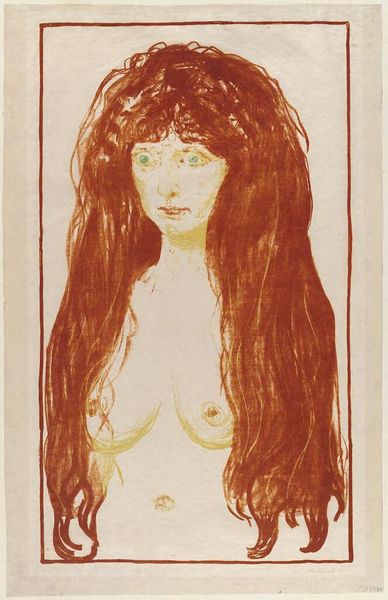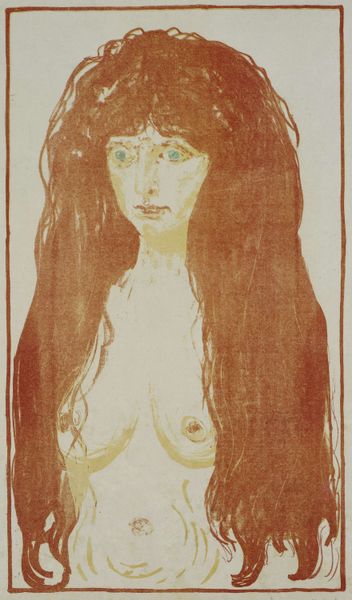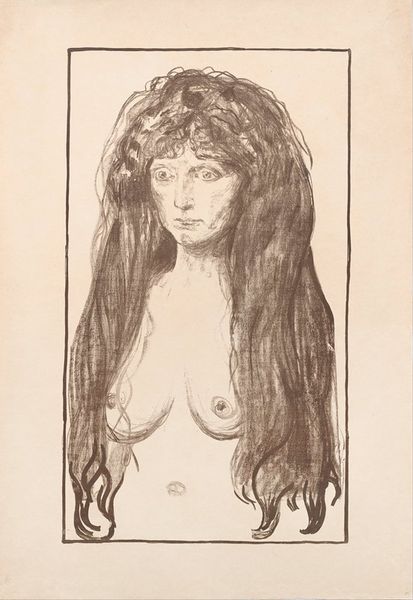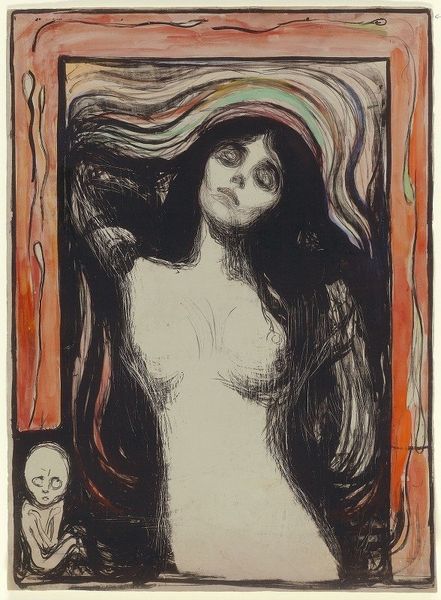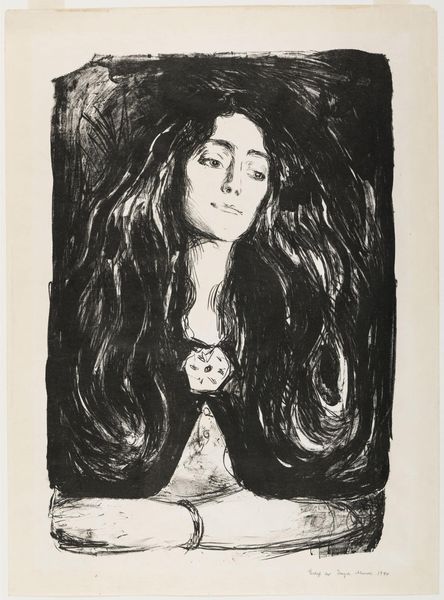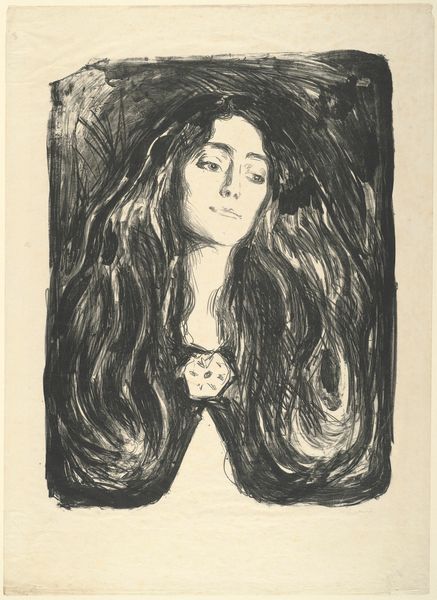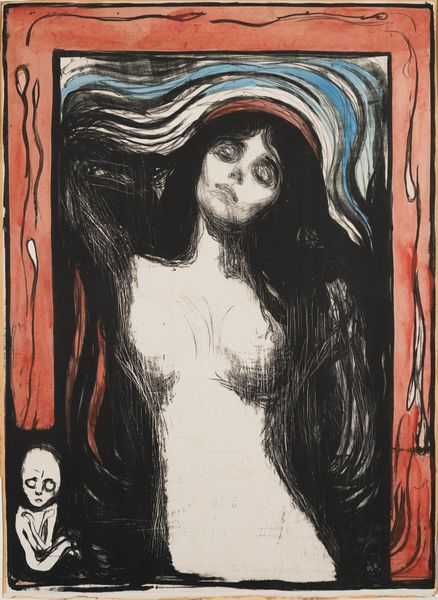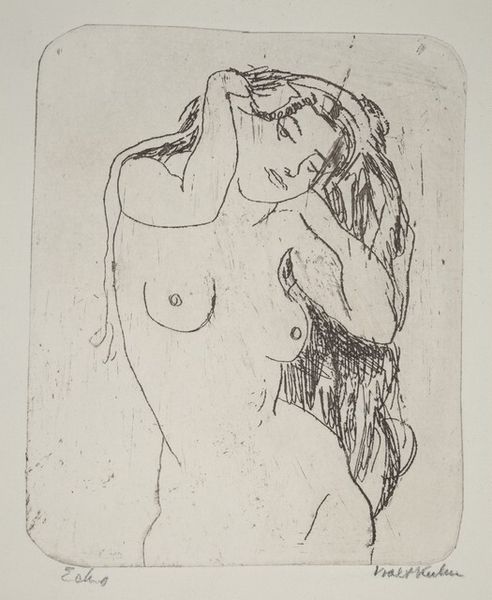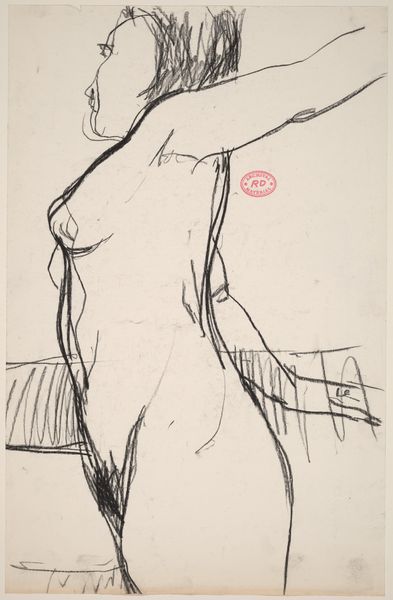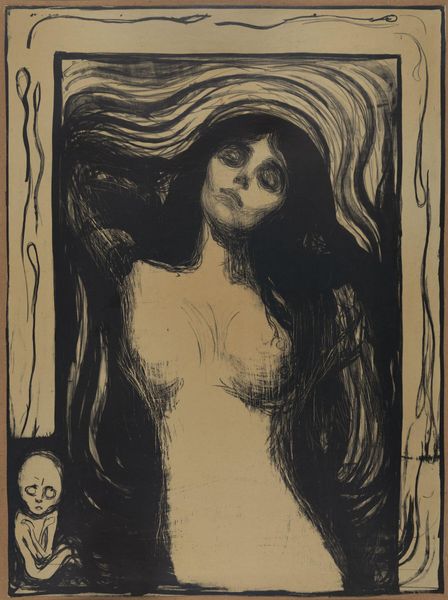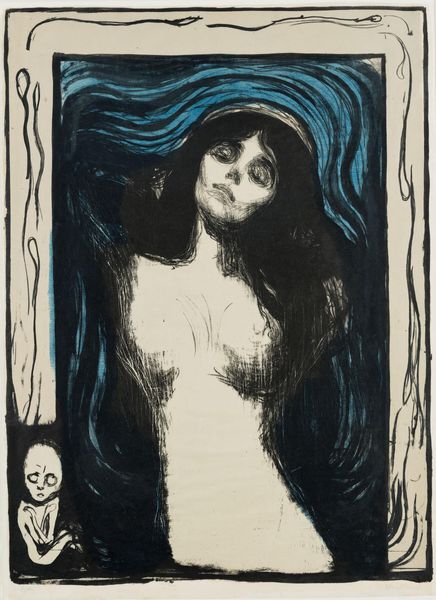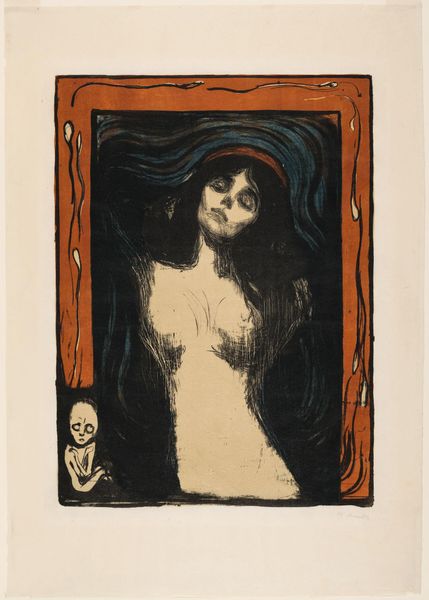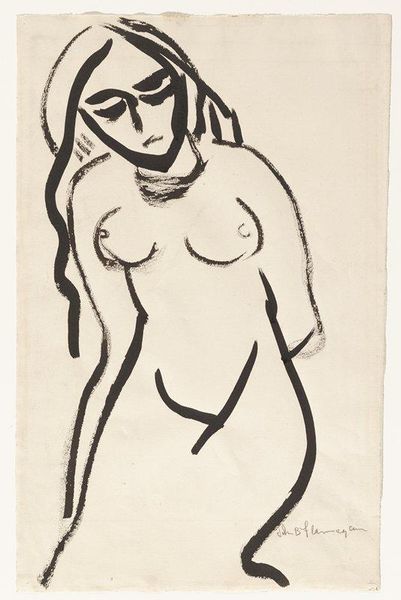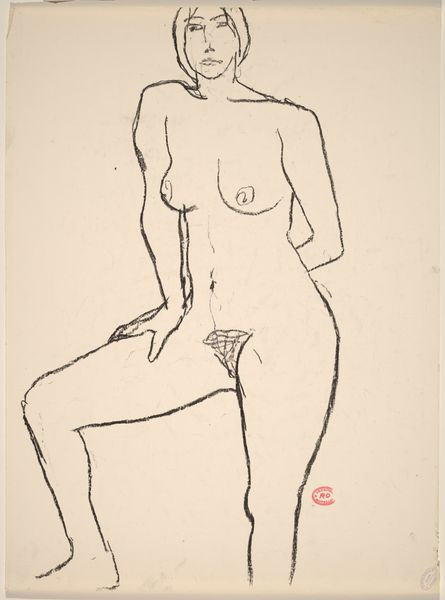
drawing, lithograph, print, paper
#
drawing
#
facial expression drawing
#
lithograph
# print
#
caricature
#
paper
#
portrait reference
#
animal drawing portrait
#
portrait drawing
#
watercolour illustration
#
facial portrait
#
portrait art
#
fine art portrait
#
digital portrait
Dimensions: 700 × 403 mm (image); 778 × 481 mm (sheet)
Copyright: Public Domain
Curator: Welcome. Before us is Edvard Munch's lithograph, "Woman with Red Hair and Green Eyes. The Sin," created in 1902. It is currently housed here at The Art Institute of Chicago. Editor: Immediately, I'm struck by the texture – the paper seems almost coarse, absorbing the ink. There's a rawness, a vulnerability. It feels very…material. Curator: It's a powerful image. The figure's direct gaze forces a confrontation, doesn't it? I see it as Munch exploring themes of female identity, transgression, and the societal pressures placed on women. Think of the era. Editor: And look at the color. The dominant red of the hair contrasting with her pale skin – it creates a striking visual tension. We are dealing with ink on paper. Considering the resources required to make a print in the early 1900's tells you about its social life at the time. It circulated for the people. Curator: Precisely. This wasn't a private indulgence but a medium meant to circulate, potentially to shock, to challenge. I think Munch is inviting us to consider how societal expectations can both empower and imprison individuals. She is naked, alone, a challenge to dominant narrative structures. Editor: Yes, it's about accessibility through reproducible image. The simplified lines and flattened planes give it a stylized, almost woodcut-like quality that resonates through material production. This contrasts so strongly with the classic way one could engage with female nudes through canvas-based artwork. Curator: It brings up so many themes surrounding gender, social transgression and shame. You can feel the pressure to reform or become hidden in those wide eyes. Editor: I leave considering printmaking's ability to bring certain charged artworks to social circulation, challenging the elites while it circulated.
Comments
No comments
Be the first to comment and join the conversation on the ultimate creative platform.
